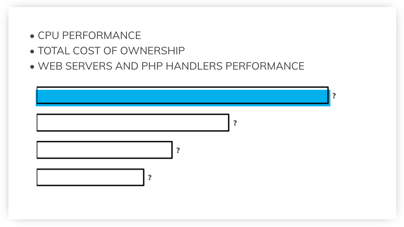Analysis of AMD EPYC™ and 2nd Generation Intel® Xeon® Scalable Processors-based servers.
Last Modified date Jul 25, 2021
Global digitalization caused by the recent pandemic has accelerated the sales of IT infrastructure and services to provide 24/7 secure collaboration, Virtual Machines, and e-commerce tools to Work From Home (WFH) users. Many businesses who are looking to quickly scale IT capacity, start shifting from on-premises to public and hybrid clouds. Yet, concerns over data sovereignty and state regulations make IT decision-makers consider traditional VPS, VDS, and colocation over public cloud instances. It is a strong call for the hosting market to deliver clients local, low-latency data access and hardware at affordable price points.

Considering the competitiveness of the hosting market, your server capability is not just some internal metric to monitor, now it has become one of the key requirements that provide your customers with speed and stability of their business. A lot of web hosting companies are finding their niche, but if you are a “generic” hosting company, you are often forced to focus on the quality of services and monetization. This leads to the question: is newer hardware and software a mandatory requirement when you need to deliver competitive services?
CloudLinux clients often ask:
- Which PHP handler/webserver has better performance?
- What is the comparative performance of mod_lsapi vs. PHP-FPM?
- Which processor is a better choice today?
Therefore we decided to find the answer and test the latest hardware capabilities in the most popular system configurations for shared hosting, and then check which variant may deliver the best server performance. CloudLinux has executed 24 different tests under the latest CloudLinux OS versions 7 and 8, running on top of select Intel and AMD server processors. We also have prepared additional system configuration tips for shared hosting.
Our goal was to benchmark select server configurations with popular core counts, fitting within a certain price range, recreating a shared hosting environment. We have simulated typical numbers of processed PHP requests per second to identify the most optimal configurations.









